#tango romantica
Explore tagged Tumblr posts
Text
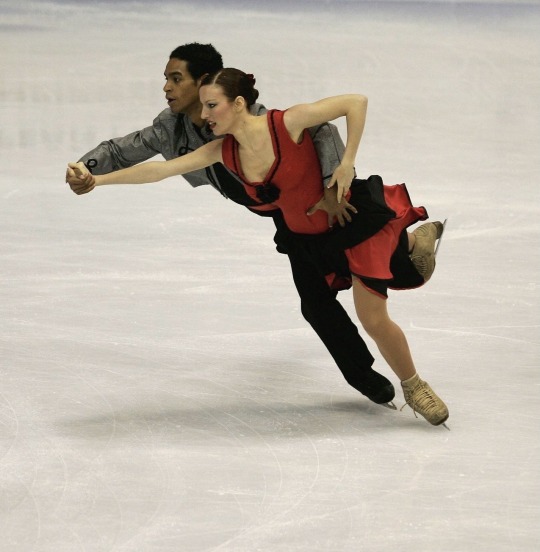
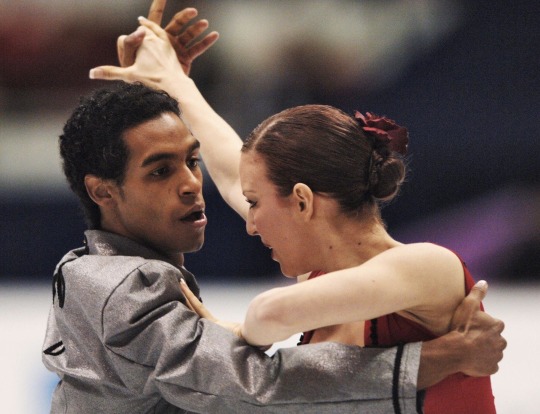
Leonie Krail and Oscar Peter Compulsory Dance “Tango Romantica” 2006. Photographed by Pascal Le Segretain.
#ice dance#leonie krail#oscar peter#figure skating#pascal le segretain#compulsory dance#tango romantica#2006
92 notes
·
View notes
Text

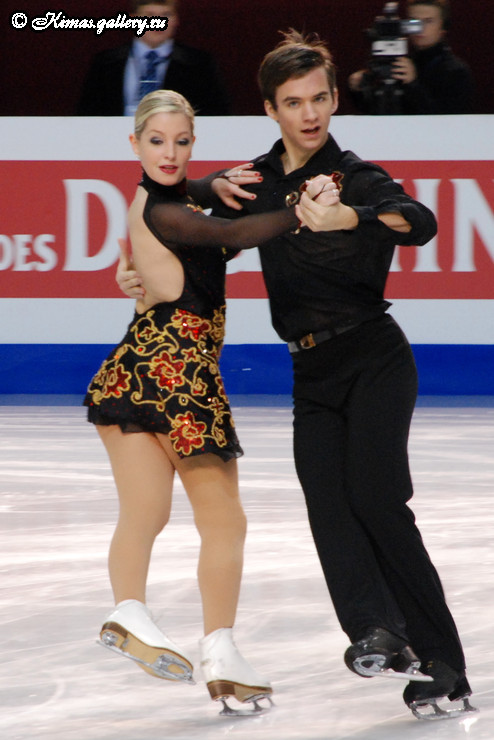
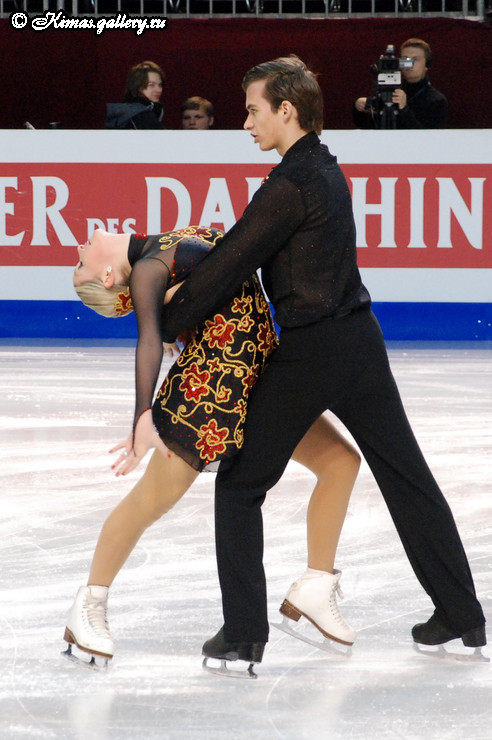
Ramona Elsener and Florian Roost skating the Tango Romantica at the 2010 European Championships
(Source: Kimas)
#Ramona Elsener#Florian Roost#Elsener Roost#Figure skating#Ice dance#Tango#Tango Romantica#2009–2010#2010 Europeans#Switzerland
10 notes
·
View notes
Text
Breaking news I’ve been sobbing for weeks over bby angel VM about to be announced for the first time at the Olympic Games in their home country!!

Scootie looking at her and shaking her hand up and down saying “we can do this” and T repeating the same thing back. Probs also saying ‘we’re are so prepared, we’ve trained so hard, we deserve this moment’.
T doesn’t take her eyes off him this whole time they are circling before they present, staring almost hypnotically at his eyes with a beautiful yet stone faced, determined expression convincing herself despite just days earlier sobbing on the ground feeling like she couldn’t do it.
As they take their last curve around they both touch their hearts and I can’t help but think that’s a kin to the lyrics in their national anthem “with glowing hearts” which was also written on a big mural at the very top of the arena. They also would often in these days touch each other’s hearts before they took to the ice. He gives her a reassuring wink and off they go!
It must be because I’ve studied them for so long (a few years but pretty obsessively 😅) but I really do look at them in certain moments and see maybe the way they do through their eyes looking back at each other the innocence of the little 7+9 year olds who held hands for the first time. They are young adults- world class athletes here but I can see the sparkle in their eyes they both describe the other having first learning to dance together. 13 years of growing up side by side in this moment they had waited their whole young lives for. 🥹❤️🩹
22 notes
·
View notes
Text
youtube
#youtube#entretenimiento#peliculas#comedia romantica#peliculas mexicanas#peliculas de prime video#tangos tequilas y algunas mentiras
0 notes
Text
Ice Dance Reimagined
With the upcoming ISU Congress in Summer of 2024 and ice dance seemingly in an unending beta of rule changes, I figured I would float a few thoughts on the many changes that have been made over the past few years.
As I mentioned in my RD Rules post, the ISU has essentially made moves to return to the original dance (making the change from short -> rhythm dance even more pointless in the first place) choosing to dictate broader themes.
To me, what makes ice dance so unique amongst all the disciplines is the variety of elements and styles that each team is expected to have in their repertoire and the fact that even in a given SD/OD/RD theme, people have to go out of their way to have a unique take. The rules which have lowered difficulty--in the name of giving skaters more room to be creative--have in fact resulted in the opposite. More teams are doing the same difficult features, same footwork, same lifts, same transitions than ever before. Both drawing on old choreography and leading to homogeneity across the discipline.
I propose a scheme which is a compromise of the two conflicting motions in ice dance right now: 1) the “no pattern ever” give everyone freedom vibes and 2) the people who believe the pattern is king. Alternate having a patterned and original short dance, giving the discipline an opportunity to develop new patterns (the original intention of the pattern dance type step sequence) while also ensuring that teams are continuing to emphasize solid ice dance foundations like skating in hold.
Original Short Dance Layout
1PSt
2Pst
Non-touch midline step sequence (style A)
Twizzles
Lift
Patterned Short Dance Layout
Pattern 1
Pattern 2
Non-touch midline step sequence (style A)
Twizzles
Lift
What the ISU (and choreographers/coaches) have fundamentally misunderstood about the appeal of patterns is that EVERY step is intentional and meant to elicit a specific effect and contribute to an overall impression. There's a reason that even though the Yankee Polka and Finnstep and Tango Romantica all include a LFI Closed S-Step, they have completely different timing and contribute to very different impressions. And it is because the general footwork in the pattern, in addition to just the difficult steps and turns, is geared towards reflecting the unique character of that pattern. I cannot count the number of pattern step sequences since 2017 that have effectively been copy pasted across blues, Latin, foxtrot/quickstep, blues x2, and Latin x2 once again programs with only minor changes to mini-lifts. They lack intention, they are the slowest section of the program for a good 90% of RDs because every team--no matter the style--is attempting to make their turns as drawn out as possible to get credit.
I propose that in original dance years there are 2 PSt segments, each with 3 KPs with the former 4th KP serving as a choreographic benchmark. This would allow for direct comparison of teams doing the same steps (and not allow teams to do the exact same difficult turns 5 years in a row) while simultaneously incentivizing creativity.
For example, under “Jig” below there are the following guidelines:
Jig is characterized by (1) high tempo, (2) rapid toe and heel steps, (3) jumps, kicks, hops and other accents including slides and shuffles, (4) tight and rigid torso, emphasis on leg movements over arm movements, (5) music in 12/8, 6/8, 9/8, 2/4. Teams are expected to pick music and a type of jig dance which fits these characteristics. 1PSt must start at center ice, 2PSt must end at center ice.
An example of key points:
1KP1: A) LFI Counter, LBI Bracket B) LBI Counter, LFI Bracket in any variant of closed hold except basic hand-in-hand
1KP2: both skip, LBO C-Step, RFI Swing S-step. in killian or foxtrot variant.
1KP3: A) RBO 1.5Tw, any kicking/tucking motion, RFI Bracket, RBO Bracket. B) LFO 1.5Tw, any kicking/tucking motion matching/mirroring/corresponding to partner A, LBI Bracket, LFO Bracket. Partners must be touching once exited from twizzles.
1PSt being completely prescriptive in KPs and 2PSt being slightly more flexible:
2KP1: both beginning any bracket, immediate counter, 1-5 intermediate steps where at least one partner must hit at least one difficult skating position* for at least a 1/2 beat, skid exit.
2KP2: both beginning swing FO C-Step, 3-8 intermediate steps/turns with partners MIRRORING each other, ending BO Counter. Partners must be touching entire time
2KP3: both beginning double S-step, 1-4 intermediate steps, ending with one partner on a BO edge and picking into the ice and the other partner doing at least one revolution around. PSt, officially concluded when the stationary partner resumes motion. Partners much be touching at two points until the first revolution around in 2KP3 is concluded.
Skaters would receive credit for the KPs accomplished in both and would receive a fourth Y/N based on whether they met choreographic requirements outlined in italics above.
*difficult skating position: any position where the skating leg is bent at least 90 degrees (shoot the duck, hydroblade, any lunge, any crouch), besti squat, spread eagle, ina bauer, spiral, layback, etc.
Now for some theme ideas:
2024-2025 - Patterned Short Dance - Grand Ballroom with a pattern of Golden Waltz
Teams must skate a program which reflects the character of the waltz particularly with regards to (1) lilting knee action, (2) closed position in hold, (3) repeated rotation as a unit when progressing across the ice, (4) movements should appear long, extended, and with sweeping open posture, (5) tone and musical themes may vary as long as a waltz character is maintained.
2025-2026 - Original Short Dance - Jig
Jig originated in Ireland and Scotland, gradually progressing throughout the British Isles and mainland Europe and then throughout the world including in the Metis people of Canada and Louisiana. Straight and sand jigs were developed in the US by African Americans in the 19th century which eventually influence the creation of jazz and tap. Jig is characterized by (1) high tempo, (2) rapid toe and heel steps, (3) jumps, kicks, hops and other accents including slides and shuffles, (4) tight and rigid torso, emphasis on leg movements over arm movements, (5) music in 12/8, 6/8, 9/8, 2/4. Teams are expected to pick music and a type of jig dance which fits these characteristics.
2026-2027 - Pattern Short Dance - Percussive Dances with a pattern of Paso Doble
(1) Stomping, toe picking, clapping, other percussive elements involving hitting the legs or torso, (2) dance is primarily danced to the RHYTHM and TEMPO not the melody, if there is a section without audible rhythm the team should create that beat using percussive elements (3) music must include a beat throughout, a melody is not necessary, (4) a theme should remain consistent throughout, if movements are drawn from a traditional dance they should reflect the character of the music chosen and the pattern should be interpreted appropriately.
2027-2028 - Original Short Dance - Music and Rhythms of the 1970s
The 1970s were one of the most influential eras of music, giving birth to entire new genres and styles and furthering the popularity of funk, soul, R&B, jazz, glam rock, folk rock, pop, disco, reggae, electronic music, and the birth of hip hop, it was defined by experimental sounds due to new music equipment.
(1) Music choices and rhythms should be COHERENT and related, the two music choices should be related thematically, structurally, or stylistically beyond more than just being from the 1970s, (2) one piece of music should be high tempo (>120bpm) and one piece should be low tempo (<100bpm), a third piece can be skated to any tempo, (3) the holds, movements, and steps in the PSt should reflect the style of music and dance chosen
2028-2029 - Pattern Short Dance - Jazz and Tap with a pattern of Quickstep
Jazz dance is a particularly broad genre that includes original social dances like the Charleston developed in parallel to the birth of jazz in Harlem, as well as more modernized styling.
Skaters should take inspiration from dancers like Bill Robinson, Jack Cole, Fred Astaire, Gus Giordano, nd Bob Fosse, as well as Broadway stage choreography and tap dance.
(1) Music choices and rhythms should be COHERENT and related, the two music choices should be related thematically, structurally, or stylistically, (2) one piece of music should be high tempo (>120bpm) and one piece should be low tempo (<100bpm), a third piece can be skated to any tempo, (3) the Quickstep timing can be adjusted to fit the tempo of the music chosen and to reflect the character of the chosen choreography.
See: https://gotta-dance.com/brief-history-of-jazz-dance/
2029-2030 - Original Short Dance - Nuevo Latin
The ISU has done a whole lot of cha cha, rhumba, and samba, but those are FAR from the only Latin rhythms. Dancers will be challenged to develop a new pattern that isn’t already an ISU pattern (and one that hasn’t been done a million times).
Examples of other rhythms: bachata, cumbia, danzon, salsa, mambo, merengue, bomba, lena, perreo, etc.
(1) The entirety of the PSt should be done in the same style and tempo but can differ from the the rest of the program. (2) Dancers are only required to pick one rhythm style but 2-3 are permitted. (3) skaters must have two points of contact with each other the entirety of the PSt, (4) at least 6 changes of hold must take place during the PSt, this can be from the same to same hold as long as a step or turn takes place during the change, (5) 1PSt must begin at the end of the long axis, 2PSt must end at the same end.
Choreo deductions: obvious use of cha cha, rhumba, or samba music/choreo. Tango, paso doble, and flamenco also excluded.
2030-2031 - Pattern Short Dance - Folk Dances with a pattern of Polka
Folk and country dance is characterized by it's informal and reflection of the general populace intended for widespread social dance. As opposed to court and ballroom dances, it should not be characterized as refined, ritual, or for stage performance. Skaters are encouraged to choose a folk dance related to their background. (1) Polka is skated to a bpm of 120bpm +/-4 and can be skated to and interpreted in any kind of musical style, (2) the same folk dance theme should remain constant throughout the dance or if two dances are chosen they should be closely related (i.e. the non-touch midline step sequence done in the line dancing style and the polka in the square dance style) (3) skaters may have a non-touch portion of their 2PSt provided they remain within one arm-length of each other.
Examples of folk dances include: maypole, hora, tarantella, polka, square dance, clogging, Dutch crossing, oberek, mazurka, Morris , polska, ballu tundu, bhangra, circassian, dabke, garba, khigga, romvong, peacock dance, nongak, yangge, chacarera, zamba, malambo, marinera, akayida, kizomba, agbadza, baile folklorico, shota, rugovo, cumbia, landler, schuhplatter, sardana, dragon dance, lion dance, mapale, danza de la tijeras, jenkka etc.
2031-2032 - Original Short Dance - Swing and Social Dances
Despite the many years of jive, charleston, and jitterbug original dances, there is no swing (or related dance) pattern. Dancers are to pick a swing-adjacent dance style and create a pattern. Examples: charleston, lindy hop, jive, jitterbug, shag, boogie woogie.
(1) Dance style should generally be from the 1920s-1950s era, (2) skaters should include intricate changes of positions for each partner reflecting the highly athletic nature of swing dancing, (3) 1PSt should begin in front of the judges with a 1-2 second mini-lift and end in the same location, 1PSt and 2PSt should consist of similar patterns across the ice and each take one lap, (4) skaters should utilize hops, skips, assisted jumps, and up to 3 mini-lifts per PSt to reflect the character of their chosen dance.
Swing does NOT necessarily need to be up tempo if choosing a style such as West Coast Swing which is danced with a distinct lack of bounce.
And then with time in "pattern" years, new patterns will arise and be eligible for interpretation. Would love to hear people’s thoughts :)
#wtficedance#ice dance#figure skating#rhythm dance#future of fs#ice dance reimagined#kaitlyn weaver can you hear me#pattern dance#original dance#ice dance rules#opinion#rule changes#isu rule changes
39 notes
·
View notes
Note
I think they also picked kind of generic sounding music for the compulsories to make it easier on the teams, and yeah to keep things balanced. Music that's too distinctive or exciting could distract from judging and comparing the steps. I don't think they picked new songs from season to season either, like the same CD with the same four tracks would be pkayed whenever that compulsory came up. So not only would you hear those songs all season, you would have had to train and take your tests to that music growing up as an ice dancer. I believe the track V/M got in Vancouver is the one that the Tango Romantica was originally choreographed to, so that was good luck for them.
that's rough that they use the same exact tracks year after year for tests and competitions lol
balance and fairness in competitions is important, but generic music has to be harder to train to - dancing to dull music over and over again every day for a year would get really stale, so that part sounds harder on the teams. creating 4 tracks which are different but the same is a challenge for the organizers that i guess they never tried to improve on once they made the original set
the Tango Romantica was first made in 1974 - does all this mean that young teams who are doing their tests now are still skating to the same tracks as all the well known teams going back to the 70s?
2 notes
·
View notes
Note
Ok I just watched Hubbell/Donohue’s 2021 RD at worlds to Burlesque and I’m obsessed with this music for the Finnstep having really only watched VM’s Finnstep. Have you seen the performance? Do you like it? And if you’re so inclined to do this, how would you compare their technique to VM in Dream a Little Dream (which I love so much)? Thanks!
Hello! Thanks for the ask!
I have seen that performance. I love the finnstep, it's probably one of my favourite ice dance patterns, along with the golden waltz and the tango romantica.
I enjoyed it a lot that season because I thought Hubbell and Donohue had one of the better finnsteps. I'm sad to say you could really see a decline in quality in the level of steps since 2014, and most team really struggled with the quick, detailed, and intricate movements required for that pattern.
Everyone, Madi included really struggled with the twizzle at the beginning of the pattern, the women were putting their foot down, they were falling out of it, not actually doing a twizzle at all, it was rough out here. Tessa's twizzle was wonderful, she was sure, quick and her and Scott stayed in character. I also think Tessa and Scott skated closer together, which they were known for and experts at. By the time the finnstep came back around, the open hold trend had been en vogue for more than 6 years, and you could tell. H/B had solid speed and kept up their speed, but they could get a little messy in their feet/legs and didn't have quick snap that I think V/M excelled at.
To quote the iconic Tracy Wilson: "They say a finnstep should be like sparkling champagne. Bubbly, light, and crisp."
She compared Tessa and Scott to Dom Perignon, and I think Madi and Zack were just didn't have the level of effervescence and ease that was required for the steps to really flourish, but they did a solid job.
#welcome to konner cleans out her inbox#this is SO old#nonny im so sorry#konner talks skating#went back and watched both back to back a couple times#you can see madi and zack thinking#tessa and scott looked effortless
12 notes
·
View notes
Text
youtube
The Canadian Nationals 2006 free dance. It starts off with a bang - a bus full of VM family descending on Ottawa to watch the competition live.
This is the heartbreaker event for young VM, who had hopes and dreams of going to Torino Olympics 2006, but were edged out by the silver medal team of Wing/Lowe. VM beat them in both the OD and the FD, but the gap in the compulsory was too much to overcome, and Skate Canada went with the traditional choice of their more experienced and mature silver medalists. Of course, we all know how the rest of this story goes, but at the time, VM were extremely disappointed.
The compulsory, which is unsurprisingly not available, was the Tango Romantica, a difficult pattern only skated at the senior level. Therefore it was a brand new dance for VM, and according to the commentators, a ‘rough’ outing. More surprising is the lack of video of the OD, but not just for this event - while several uploaders have shared it from 4CC (an understandably more accessible event as it was an international, senior event), there seems to be only low quality versions of the Nationals OD (for which I am still grateful!) and that is it. Even Junior Worlds does not seem to have the OD available.
As with the 2004/2005 season, VM competed as juniors, but at Nationals were in the senior division, and therefore had to add an extra minute and more elements to their FD for this event. When they did not make the Olympic team, they were assigned to Four Continents 2006, where they made their senior international debut and used this extended version of their FD again (though they had a disappointing skate), before going to Junior Worlds where they became the first Canadian team to win gold.
#so 2005/2006 is probably my least favourite VM program year#but their programs were so difficult#watch those changes of hold in the FD and try to imagine it happening these days lol#the uploader has the fd for 4cc and the quality is great but the skate makes me sad for them#Youtube
4 notes
·
View notes
Text
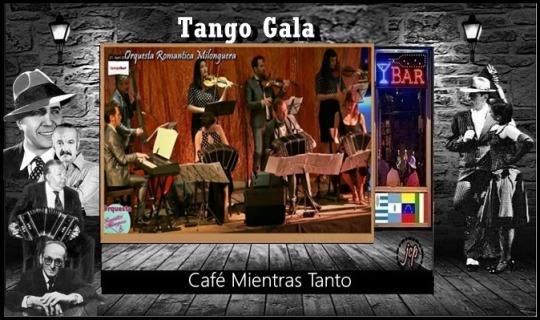
TANGO GALA Orquesta Romantica Milonguera Tangobar, Viena 2018
Atención: Solo para ver en PC o Notebook Para ver el Concierto pulsa o copia y pega el Link: https://x.com/JulioPison/status/1666868014619164678
Café Mientras Tanto jcp
0 notes
Text
Le varie tipologie di tango: una danza ricca di storia e tradizione
Il tango è una danza argentina che ha avuto origine alla fine del XIX secolo nei quartieri malfamati di Buenos Aires. Da allora, si è diffuso in tutto il mondo, diventando una delle danze più popolari e affascinanti. In questo articolo faremo un lungo viaggio all'interno delle varie tipologie di tango esistenti. Le varie tipologie di tango Il tango è una danza di coppia, caratterizzata da movimenti sinuosi e appassionati. La coppia è composta da un uomo e una donna, che si muovono in un abbraccio stretto. Il tango è una danza molto espressiva, che permette ai ballerini di comunicare le proprie emozioni attraverso i movimenti del corpo. Nel corso del tempo, il tango ha subito diverse evoluzioni, dando vita a diverse tipologie di danza. Le principali tipologie di tango sono le seguenti: - Tango tradizionale: è la tipologia più antica di tango. È caratterizzata da movimenti lenti e sinuosi, e da un'atmosfera romantica e nostalgica. - Tango nuevo: è una tipologia di tango più moderna, nata negli anni '60. È caratterizzata da movimenti più veloci e acrobatici, e da un'atmosfera più energica e coinvolgente. - Tango milonguero: è una tipologia di tango che si balla nelle milongas, le sale da ballo dove si pratica il tango. È caratterizzato da movimenti fluidi e naturali, e da un'atmosfera informale e rilassata. - Tango escenario: è una tipologia di tango che si balla in scena, in spettacoli e competizioni. È caratterizzata da movimenti virtuosi e spettacolari, e da un'atmosfera più solenne e ricercata. Oltre a queste tipologie principali, esistono anche altre varianti di tango, come il tango vals, il tango milonga, il tango canyengue, il tango salon e il tango fantasia. Il tango tradizionale Il tango tradizionale è la tipologia più antica di tango. È caratterizzato da movimenti lenti e sinuosi, e da un'atmosfera romantica e nostalgica. Il tango tradizionale è nato alla fine del XIX secolo nei quartieri malfamati di Buenos Aires. Era una danza popolare, che veniva ballata dai lavoratori e dai marinai. I movimenti del tango tradizionale erano semplici e spontanei, e la danza era spesso accompagnata da canti e musiche folkloristiche. Nel corso del tempo, il tango tradizionale ha subito diverse evoluzioni. Negli anni '20 e '30, è diventato una danza più raffinata e sofisticata. I movimenti si sono fatti più fluidi e sinuosi, e la danza è stata accompagnata da musiche più elaborate. Oggi, il tango tradizionale è ancora una danza praticata da molti appassionati. È una danza che permette di esprimere le proprie emozioni in modo profondo e coinvolgente. Il tango nuevo Il tango nuevo è una tipologia di tango più moderna, nata negli anni '60. È caratterizzato da movimenti più veloci e acrobatici, e da un'atmosfera più energica e coinvolgente. Il tango nuevo è nato dall'incontro tra il tango tradizionale e le altre danze moderne, come il jazz e la salsa. I ballerini di tango nuevo hanno sperimentato nuovi movimenti e nuove tecniche, dando vita a una danza più dinamica e spettacolare. Il tango nuevo è una danza che si balla in ambienti più informali, come le milongas. È una danza che permette di divertirsi e di esprimere la propria energia in modo libero e creativo. Il tango milonguero Il tango milonguero è una tipologia di tango che si balla nelle milongas, le sale da ballo dove si pratica il tango. È caratterizzato da movimenti fluidi e naturali, e da un'atmosfera informale e rilassata. Il tango milonguero è la tipologia di tango più praticata in Argentina. È una danza che permette di socializzare e di divertirsi in compagnia di altri appassionati. Il tango escenario Il tango escenario è una tipologia di tango che si balla in scena, in spettacoli e competizioni. È caratterizzato da movimenti virtuosi e spettacolari, e da un'atmosfera più solenne e ricercata. Il tango escenario è una danza che richiede una grande tecnica e una grande preparazione. È una danza che viene apprezzata da un pubblico più esigente. Storie, bellezza e tradizione È una danza che si è evoluta nel corso del tempo, dando vita a diverse tipologie. Ogni tipologia di tango ha le proprie caratteristiche e il proprio fascino. Il tango è una danza che può essere praticata da persone di tutte le età e di tutti i livelli di preparazione. È una danza che permette di esprimere le proprie emozioni in modo profondo e coinvolgente. In copertina foto di Maksym Kaharlytskyi su Unsplash Read the full article
0 notes
Text
Anjelika Krylova and Oleg Ovsyannikov Compulsory Dance “Tango Romantica” 1999
#love these villainous costumes#ice dance#figure skating#compulsory dance#tango romantica#anjelika krylova#oleg ovsyannikov#1990s
14 notes
·
View notes
Photo

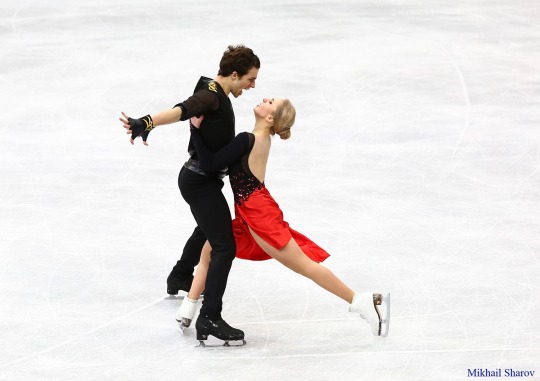

Adelina Galyavieva and Louis Thauron's flamenco costumes at the 2019 European Championships.
(Source: Mikhail Sharov)
#Adelina Galyavieva#Louis Thauron#Galyavieva Thauron#France#Figure skating#Ice dance#Flamenco#Tango#Tango Romantica#2018–2019#2019 Europeans
3 notes
·
View notes
Text
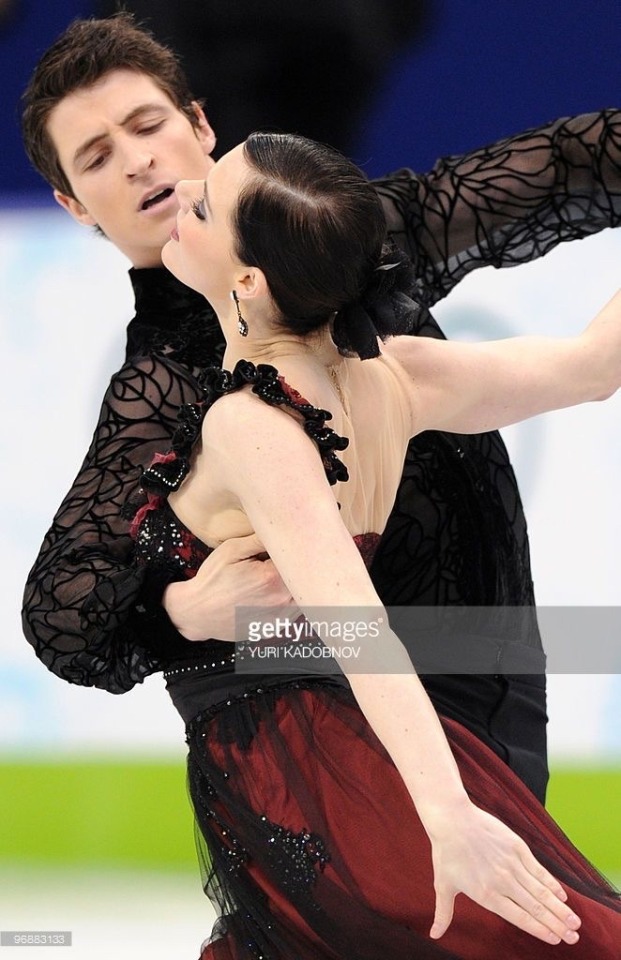
Another newly discovered stunning pic!
13 notes
·
View notes
Video
youtube
SABADO SALSEROOOOO!!! EN LA VOIX DE SION
https://www.lavoixdesion.com Disfruta las mejores melodias romanticas de lunes a viernes en la voix de Sion , Sábados salseros y Domingos del romance con el bolero y el tango, no te lo pierdas 24/7, musica todo el tiempo , no vamos a parar!!! Somos tu mejor web musical emitimos desde Suiza para todo el mundo, todos los géneros latinoamericanos y más.
0 notes
Photo


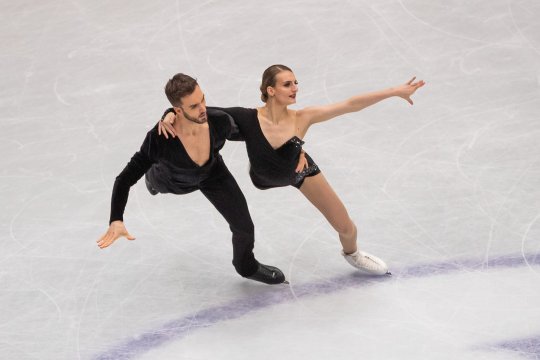

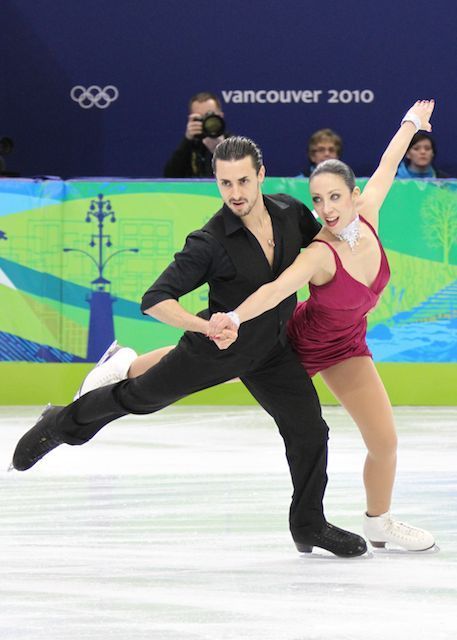


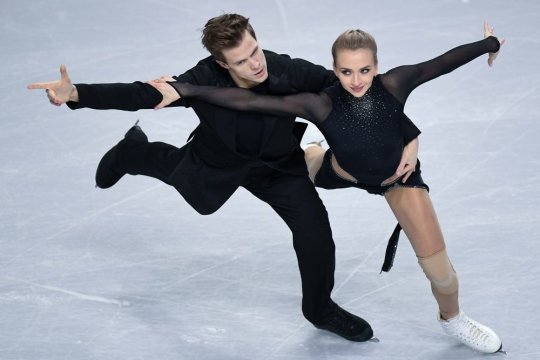

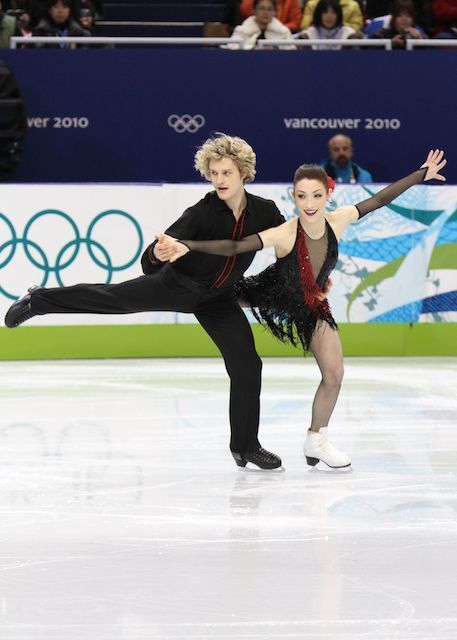
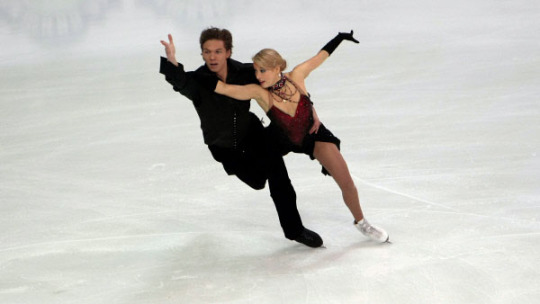

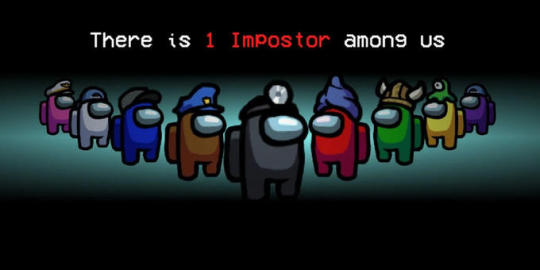
✨Tango Romantica Step 44 (Left Forward Inside Edge)✨
68 notes
·
View notes
Note
Wait a second. I knew that there were two CDs per season when they existed and you had to know both going into competition with very little notice. And I know the beats/tempo needed to be the same for every dance (like every Tango was the same tempo) but teams didn’t get to pick their own music?! So Tessa and Scott didn’t pick that Tango Romantica music in 2010?! This is shocking to me even though I guess logically it works…
at the Vancouver Olympics, Tessa and Scott skated last in the CD - they were the 4th team to skate in their group, so they skated to what i'm calling Tango #4. all the other teams who skated 4th in their groups (including Allison Reed and her former partner, Khokhlova/Novitski and the Zaretskys) also skated to this one
the teams who skated 1st in their group got Tango #1: Delobel/Schoenfelder, Capellini/Lanotte, Belbin/Agosto, Pechalat/Bourzat --
Meryl/Charlie, Paul Poirier with his former partner Vanessa Crone, Faiella/Scali, Coomes/Buckland -- Tango #2
Cathy & Chris Reed, Emily Samuelson/Evan Bates, the Kerrs, Domnina/Shabalin -- Tango #3
all 4 pieces are cut so there's an intro and another 4 bars for them to get to the designated spot at the left of the judges to start the Tango Romantica pattern. and the tracks are all slightly longer than it takes to skate 2 full patterns, so you notice there's no full stop ending - it kind of fades out as the teams finish
so not only were teams expected to train two contrasting compulsories each season, they also needed to be musically aware and flexible enough to skate to different tracks exemplifying that dance - they couldn't just memorize one track, they ideally had to understand something of the essence of the dance. a lot of the criteria that are supposed to be evaluated in current PCS judging were being tested in reality in CDs
#back then there were only 4 teams per group#i guess the idea was no 2 teams in a group would skate to the same music
6 notes
·
View notes